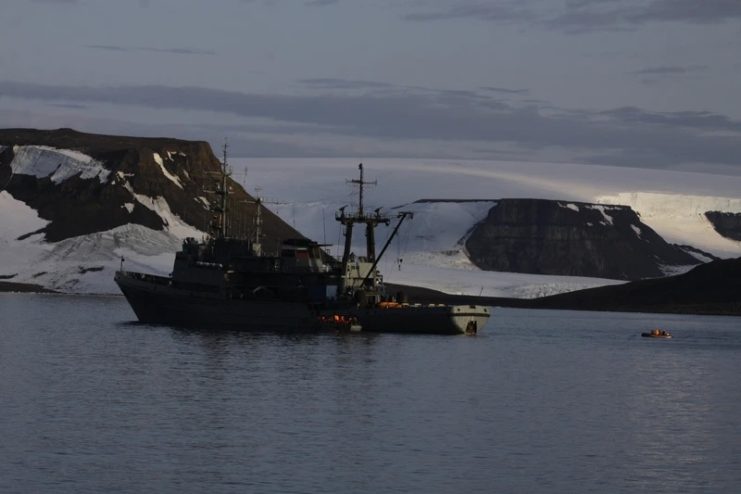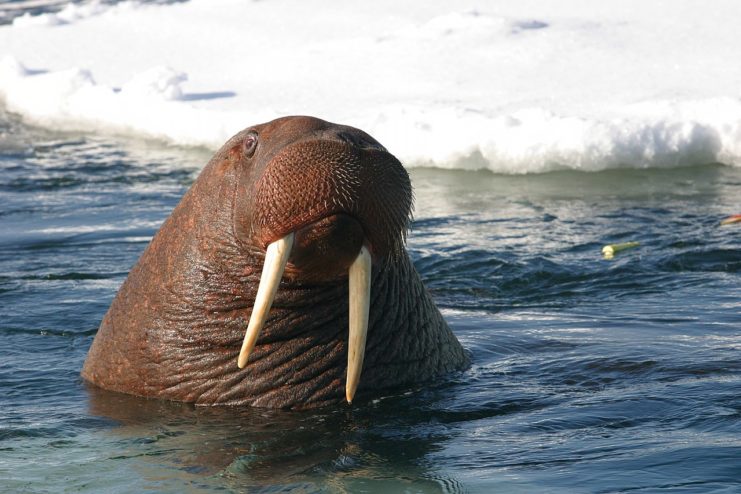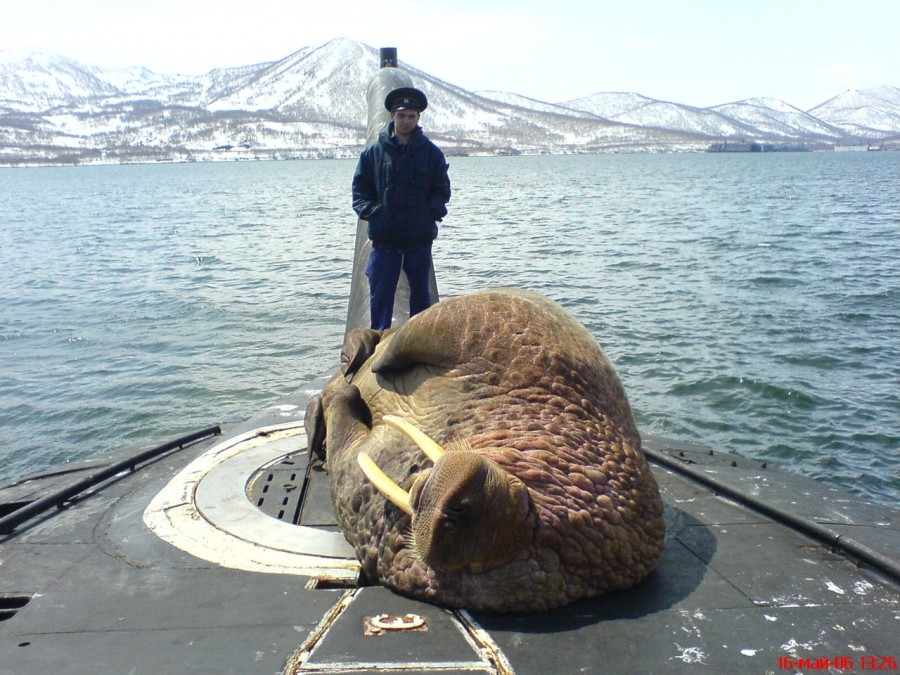Russian scientists using a navy tug boat to research the Arctic found themselves under attack by a female walrus.
The walrus, apparently defending her cubs, attacked the rubber landing vessel they were using to reach the shore. The boat sank but all occupants safely arrived on shore.
The Russian navy also reported the incident but did not acknowledge the sinking of the landing boat. They credited the service members of the Northern Fleet for their actions in avoiding the loss of any life, either human or walrus.
The expedition was working at Cape Heller. The naval tug, the Altai, was too large to approach the shore so researchers needed to board the rubber craft to reach land.

A drone was in use nearby but it is not clear if that contributed to the aggression in the mother walrus.
Walruses are not known to be aggressive toward humans unless they believe their herd or their cubs are threatened. Female walruses will chase humans away from their young but do not typically become violent.
Male walruses will become violent during mating season if human or another walrus enters their territory.
Boats, however, are a different story. Walruses are known to attack boats. Experts believe that the walrus sees the boat as a very large predator and so they are more aggressive in order to protect themselves and their herd from the perceived threat. In 1918, a herd of walruses capsized a small boat leading to the deaths of all occupants.
An aggressive walrus is a fearsome sight. Weighing up to 2,200 pounds and equipped with tusks up to three feet in length, they have few predators. Walruses have even been known to attack polar bears on occasion.
A walrus has a lifespan of 40 years. There are an estimated 250,000 in the world today divided into two types: Atlantic and Pacific. Atlantic walruses are found near Canada and Greenland. Pacific walruses are located near the Bering Sea.
Despite their fearsome size and teeth, they are known to be playful and intelligent. Many human injuries caused by walruses are actually due to the walrus playing and not realizing the effect its size has on a much smaller human.

In 2016, a walrus killed two men when one slipped into the water at the Xixiajou Wildlife Park. The tourist was dragged into the water by a walrus and the zookeeper that came to assist was pulled in as well. The men’s bodies were crushed by the weight of the walrus. But experts believe that the walrus was only playing and was not intending to harm the men.
This is also not the first time a walrus has interacted with the Russian navy. A picture believed to be from 2006 shows a walrus sleeping on the deck of a Russian submarine.
Another Article From Us: Gulf War Illness Not Caused by Exposure to Depleted Uranium
Despite having few predators, the Pacific walrus is considered endangered due to the effects of global warming. Walruses rely on ice on the surface of the sea to protect them, so melting ice in the Arctic leaves them with fewer safe places to feed.
Also, there is less ice for them to rest out of the water. This leads to larger concentrations of walruses in smaller areas making them easier targets for predators and more likely to be trampled if the herd stampedes away from a threat.
